The Pre A1 Starters exam is the first, in a series of three exams offered by the Cambridge English Young Learners (YLE) system specifically designed for primary school students. These certificates are issued by the institution University of Cambridge’s English Language Assessment.
1. Introduction to the Pre A1 Cambridge Starters exam
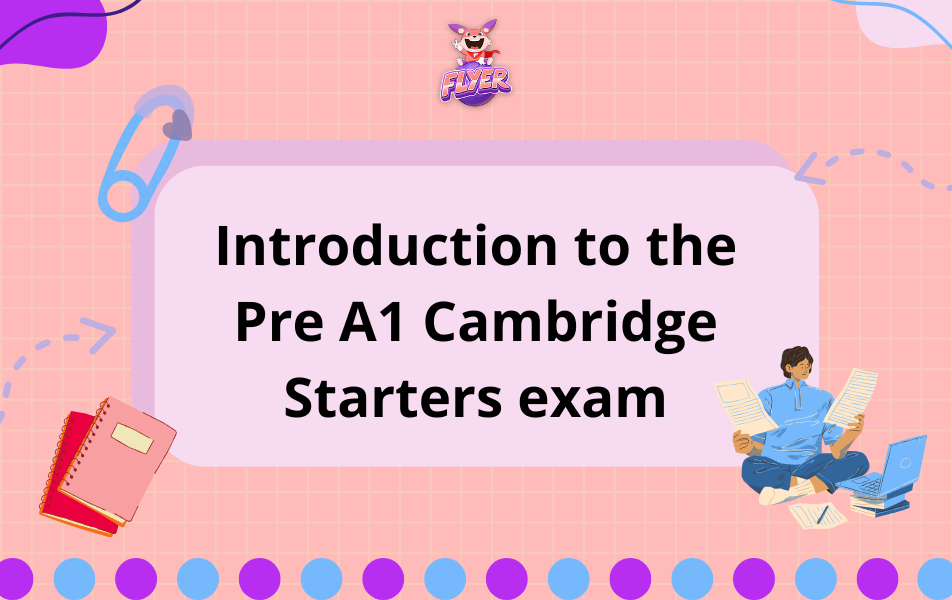
Pre A1 Starters is the first of three Cambridge English exams, designed for young learners aged 7-12. These exams introduce students to daily English speaking and writing, providing an excellent way for them to build confidence and improve their English skills.
The exams cover familiar topics and key skills in Listening, Speaking, Reading, and Writing. To better understand the Pre A1 Starters exam, parents and students can explore official Cambridge sample papers here:
2. Structure of the Pre A1 Starters exam
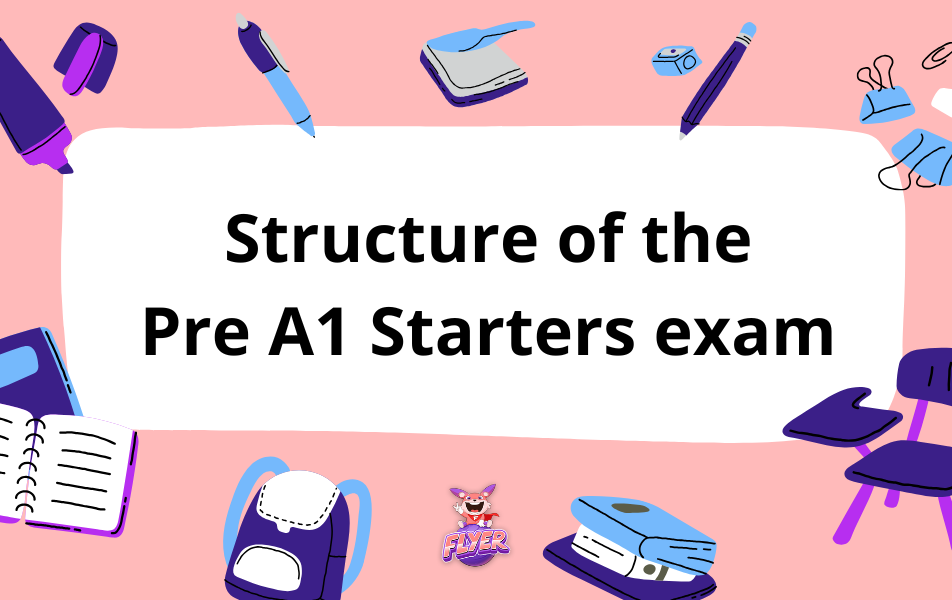
The Pre A1 Starters Cambridge exam lasts 45 minutes and consists of three parts: Listening, Reading & Writing, and Speaking. The test structure was last updated in 2018, ensuring the test format is always up-to-date and in line with modern English learning methods.
Building on this updated structure, Cambridge has recently introduced Pre A1 Starters Digital, a new computer-based format for the exam. The content and level of assessment remain consistent, providing a reliable testing experience for young learners. Parents can find more details and preparation materials HERE.
2.1. Listening exam
| Section | Description of Task | Number of Question |
|---|---|---|
| Part 1 | See an image of characters participating in different activities together with the character names that are provided. As you hear a conversation, match the names to the appropriate people in the image. | 5 |
| Part 2 | Listen to a short dialogue and fill in the proper names or numbers to answer the questions listed in the task. Proper names can include people’s names, school names, parks, stores, etc. Numbers can represent things like age, class hours, house address, pet number, and possessions. | 5 |
| Part 3 | Listen to a short dialogue and fill in the proper names or numbers to answer the questions listed in the task. Proper names can include people’s names, schools, parks, stores, etc. Numbers can represent things like age, class hours, house address, pet number, and possessions. | 5 |
| Part 4 | Listen to 5 dialogues in 5 different situations. Each dialogue corresponds to 3 pictures and 1 question. Test-takers must select the correct answer (A, B, or C) based on the information in the dialogue. | 5 |
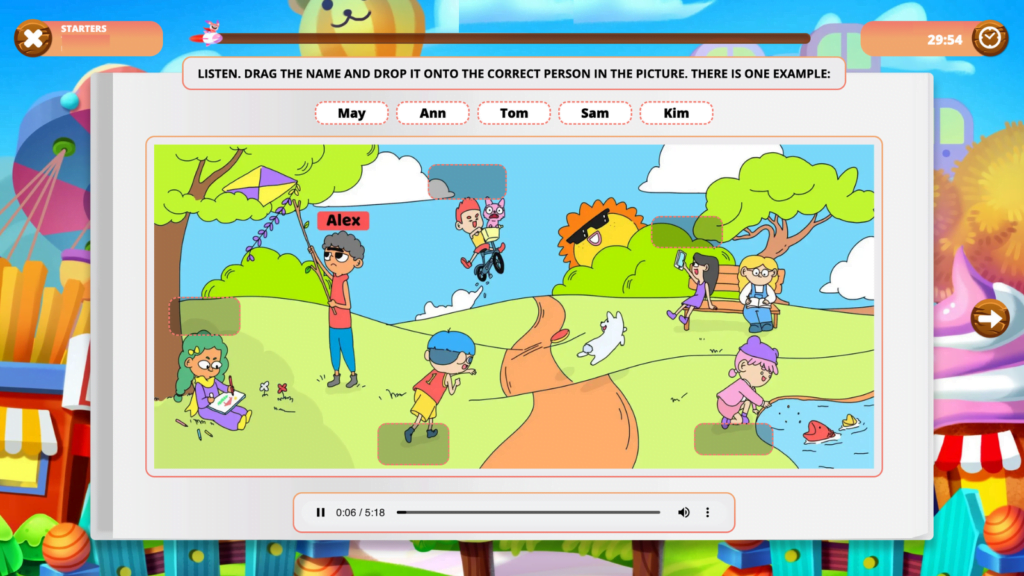
2.2. Reading & Writing exam
| Section | Description of Task | Number of Question |
|---|---|---|
| Part 1 | Read 5 short sentences describing pictures and mark a check (✔) on the picture that corresponds to the description and a cross (✘) on the picture that does not match the description. | 5 |
| Part 2 | View one picture with 5 provided sentences. If the sentence correctly describes the picture, write Yes; if the sentence is incorrect, write No. | 5 |
| Part 3 | View 5 drawings, each with a set of letters provided. Test-takers arrange the letters to form the correct English word describing the objects in the adjacent picture. | 5 |
| Part 4 | Read a passage. Choose the word to fill in the blank. | 5 |
| Part 5 | View 3 pictures, and each picture has 1-2 questions. Answer the questions based on details in the pictures, and only ONE word is needed for each answer (noun, verb, or number). | 5 |
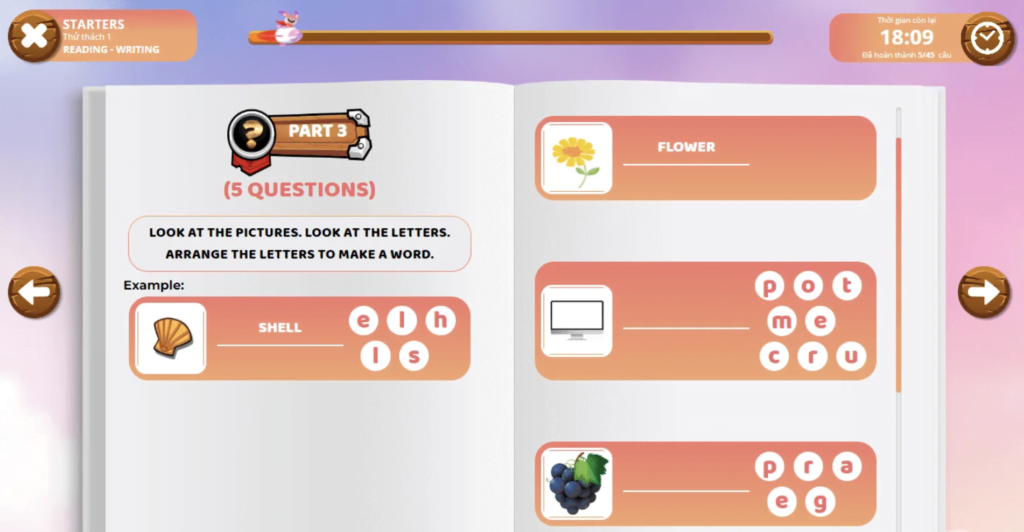
2.3. Speaking exam
| Section | Description of Task |
|---|---|
| Part 1 | – The examiner greets the candidate. – The examiner describes the task requirements, shows the candidate a large picture, and asks the candidate to point to the objects in it. – The examiner presents 8 small pictures, each depicting a different object, and then instructs the candidate to place two of the small pictures in specific locations within the large picture. |
| Part 2 | – The examiner asks the candidate a series of questions about the large picture. The candidate only needs to respond with one word. Example: Question: What’s this? Answer: plate – The examiner may ask follow-up questions about the picture and the candidate responds with a simple sentence. Example: What’s the man doing? (reading) Tell me about the boat. (it’s blue/red. It’s on the floor.) |
| Part 3 | – The examiner asks the candidate about 4 small pictures. The candidate only needs to respond with one word. Example: What’s this? (crocodile) What color is it? (green) What’s your favorite animal? (cat) |
| Part 4 | – The examiner will ask several questions on topics such as school, family, and friends. Example: What’s your friend’s name? Is your house/apartment big or small? Can you play table tennis? What’s your favorite color/animal/sport/food? |
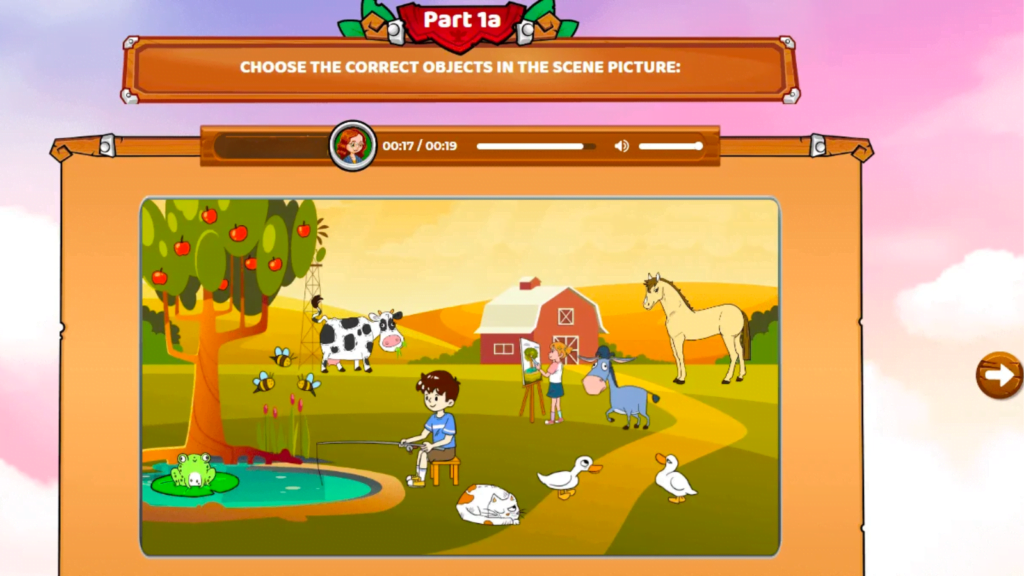
Parents can refer to the FLYER Starters Speaking practice series (5 episodes) here:
The format of the sections in the Cambridge Pre A1 Starters test is shown above. To assist young learners in achieving maximum performance on this English language assessment, it is necessary to comprehend the task instructions and understand the approach to answering them.
Learn more: Download FREE Cambridge Starters test papers with answers and audio + test prep books [UPDATED 2025]
3. How is Pre A1 Starters scored?
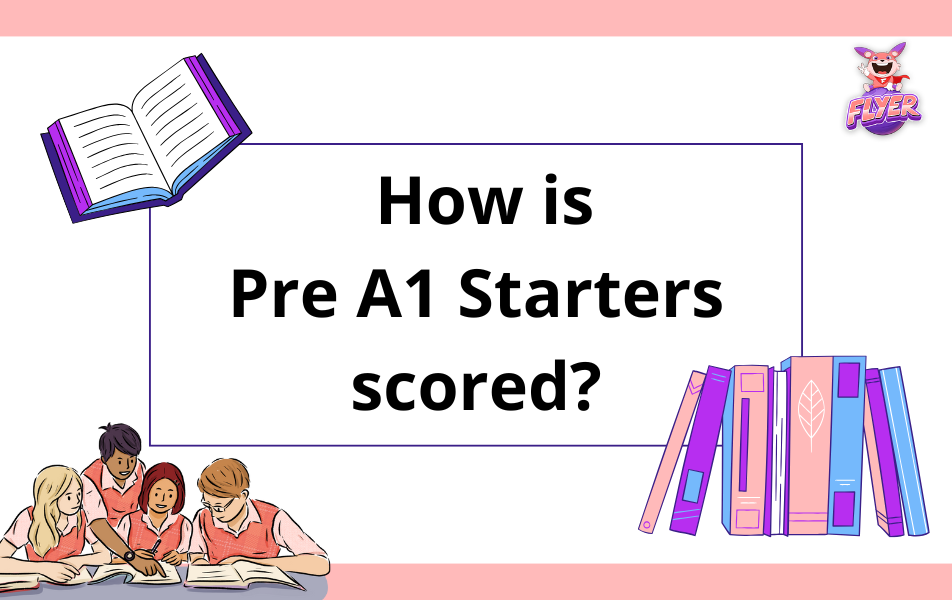
Pre A1 Starters consists of 3 sections, and each section can receive a maximum of 5 shields (Cambridge logo) as an illustration on the certificate. Each shield represents that the candidate has completed the section, but more effort is needed. Receiving 5 shields indicates that the candidate has performed very well in the exam.
Although all candidates who participate in the exam receive a certificate, and Pre A1 Starters is not a pass or fail test, typically, achieving 10 shields out of a total of 15 shields (with no section scoring less than 2 shields) is considered a “pass” in the exam.
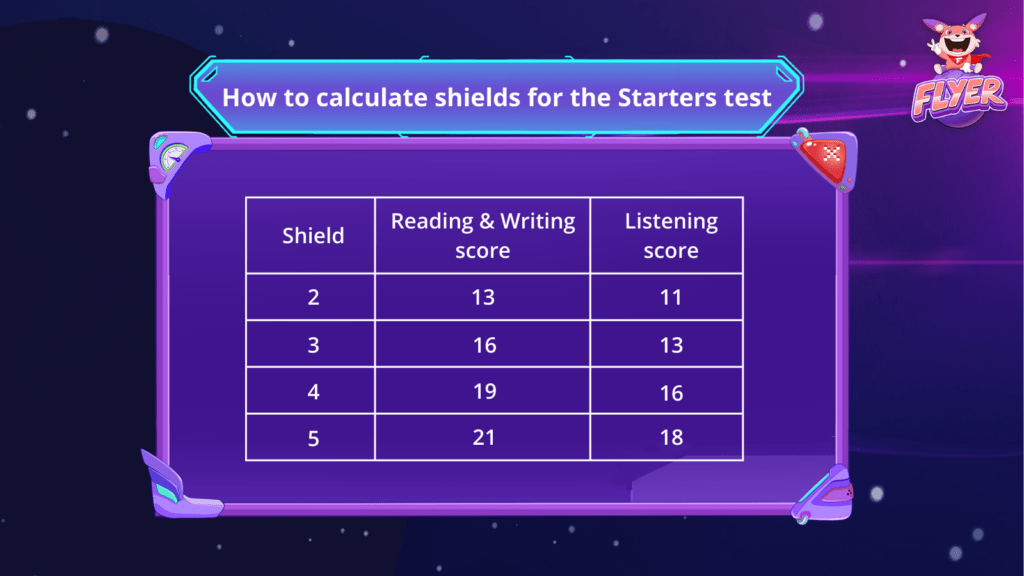
4. Pre A1 Starters exam preparation materials
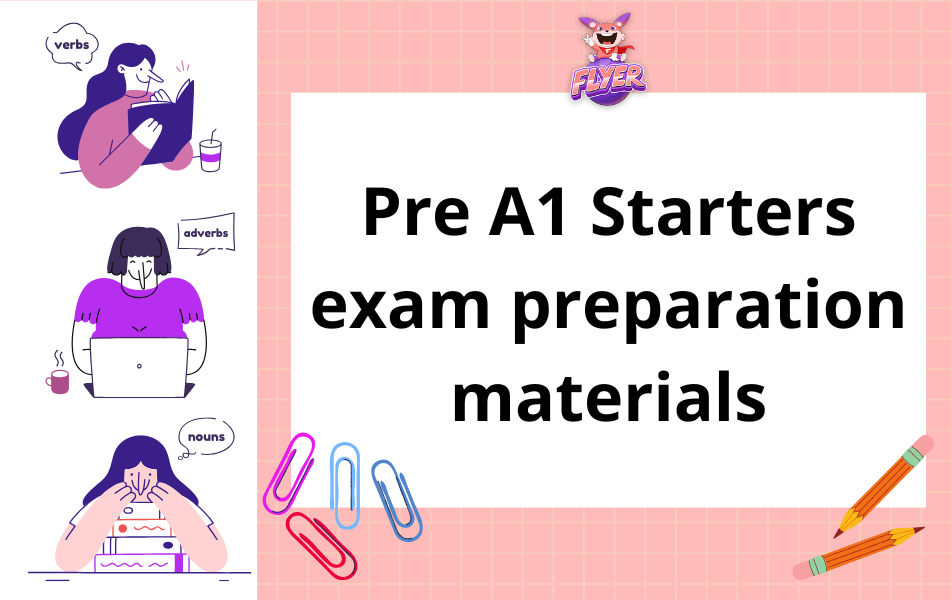
4.1. 200+ practice Starters exams on FLYER Virtual English Testing Platform
FLYER Virtual English Testing Platform offers 200+ Cambridge Starters practice exams (covering all sections: Listening, Reading & Writing, and Speaking) to provide your child with preparation for the Cambridge Starters exam.
- These exams have been carefully compiled to match the format (up to 90%) following Cambridge’s latest standards.
- The automatic scoring system and answer key will help students review and study effectively at home.
- Interactive exercises and game simulations stimulate children’s brain activity and interest in learning.
- It offers various fun learning features such as challenges with friends, short practice exercises, and vocabulary reviews.
Moreover, a helpful feature for parents is the Learning Report, which makes it easy to track the progress of their children’s studies. The system automatically stores all test results and uses them to provide feedback on the student’s current proficiency level, strengths, and areas that require improvement.
More significantly, parents who use FLYER’s virtual testing platform can save up to 80% on their kids’ exam preparation expenses!
4.2. FLYER AI-powered Speaking tools
FLYER provides AI-powered speaking tools to help students improve pronunciation and communication skills:
- AI FLYER Bingo: An intelligent assistant that helps students develop a daily English-speaking habit while naturally improving their listening comprehension and pronunciation.
- FLYER AI Speaking allows students to practice speaking anytime, anywhere, enhancing their English reflexes. It evaluates pronunciation, grammar, and vocabulary while providing detailed phonetic feedback and IPA-based corrections to ensure accurate pronunciation.
4.3. 30-day home study plan for Starters
| Day 1 | Day 2 | Day 3 | Day 4 | Day 5 | Day 6 |
| Write a letter/card to a friend or family member. | Complete a Word Search game. | Design your reading corner, indoors or in the garden, and enjoy a favorite book there. | Record your child’s voice while they read songs or poems for children. | Have your child draw their dream house and describe what’s inside it in English. | Listen to an English song and try to sing along. |
| Day 7 | Day 8 | Day 9 | Day 10 | Day 11 | Day 12 |
| Draw a picture describing an English word your child has learned. | Play “Find it” game. For example: find something green, find something soft,… | Play the “Repeat” game. Say one English word, and the next person repeats that word and adds a new one. Continue until someone makes a mistake. | Have your child draw a picture of their favorite object, share a memory, or facts about that object in English. | Draw a few facial expressions and write a few words to describe each expression, such as tired, happy, busy, hungry, etc. Then, have your child ask everyone in the family, “How do you feel today?” | Who can say the tongue twister fastest: “Four, five, fresh fish for you. Purple, paper, people. Purple, paper, people.” |
| Day 13 | Day 14 | Day 15 | Day 16 | Day 17 | Day 18 |
| Plan a dream food menu for a week. | Listen to a favorite English song and create your own dance. | Have the children “teach” their parents some English words using flashcards. At the end of the day, check if the parents have learned the words. | After walking halfway, take a short break with English games. | Instead of texting, record your child speaking in English and send it to your family or friends. | Build a fort with blankets and read inside it. |
| Day 19 | Day 20 | Day 21 | Day 22 | Day 23 | Day 24 |
| Play “Moving Objects” indoors. “What is different? Where was it before? Where is it now?”. | Create a list of animal names in English. Ask the child to arrange the animals from biggest to smallest, fastest to slowest,… | Cook together and have your child read the ingredients and recipe in English. | Place an object on the floor, close your eyes. Have your child guide you to find them based on their instructions. This game not only creates opportunities for families to spend time together, enhancing the child’s teamwork skills but also helps the child practice and understand directions, like “Go straight…”. | Draw your toy store. Write about the toys inside it. | Find a picture in a book or newspaper. Describe them using your own ideas like “Her name is… I think she feels… She likes to…”. |
| Day 25 | Day 26 | Day 27 | Day 28 | Day 29 | Day 30 |
| Watch “HOW TO” videos and create fun items together. | Play with the whole family and remember to record a video, trying to get the child to speak in English for 1 minute. | Write about 5 favorite countries the child wants to visit: where they are, what the weather is like, and what the child wants to do there. | Write a list of verbs such as run, sit, walk, jump, sleep, sing, eat, etc. See how well the child can recognize vocabulary and express it. | Practice the vocabulary learned with Pictionary or Charades. | Choose to read a newspaper, magazine, or website in English. |
- See more Cambridge-recommended study materials: HERE
5. Tips to help children succeed in the Pre A1 Starters exam
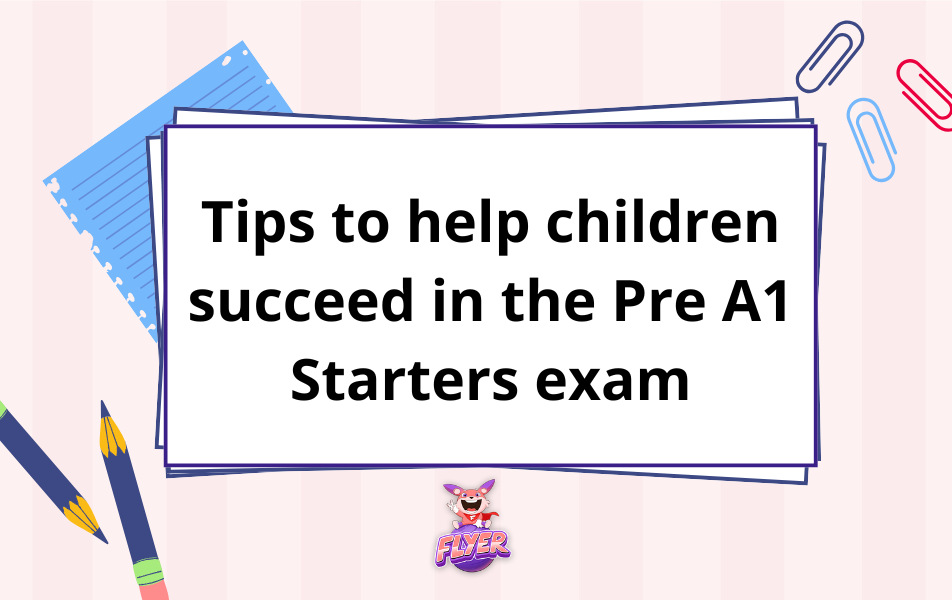
- Practice accurate spelling of words from the Pre A1 Starters vocabulary list.
- Use present simple and present continuous tenses when speaking.
- Practice describing people (what they do, what they wear, what they look like…).
- Practice coloring, matching, and answering simple questions.
- Practice asking and answering simple questions.
- Turn jumbled letters into meaningful words.
Exam day notes:
- Before the exam, candidates should get enough sleep and avoid over-exertion.
- Have a full breakfast, drink water, and use the restroom before the exam.
- Listen carefully to the invigilator’s instructions, read the directions carefully, and avoid talking to other candidates.
- Raise your hand if you have a question during the Listening section but do not ask questions during the exam.
- Try to write down all the answers to the questions even if you’re not sure.
6. FAQs about the Pre A1 Starters Exam
6.1. What is the difference between Pre A1 Starters and Pre A1 Starters Digital?
The only difference is the format—Pre A1 Starters Digital is computer-based, while the traditional version is paper-based. The exam structure, content, and scoring remain the same.
6.2. Is there a passing or failing score?
No, each candidate receives a certificate reporting their score.
6.3. What is the best age for children to take the Pre A1 Starters exam?
It is typically designed for children aged 6-7 years old, but learners of different ages can take it depending on their proficiency.
6.4. How long should my child prepare for the Pre A1 Starters exam?
Preparation time varies, but a structured 30-day study plan can be effective. Using FLYER’s practice exams and AI tools daily will help reinforce learning and build confidence.
Conclusion
With any luck, the advice provided here will assist parents in helping their kids create a study schedule that will help them ace the Pre A1 Starters test and receive the best possible scores.
Read more



